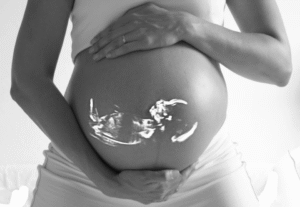Shortness of breath, or dyspnea, is a sensation of difficulty in breathing that can be alarming. Many people experience breathlessness even when their oxygen saturation (SpO2) levels are within the normal range (95-100%).
If your oxygen levels are fine, why do you still struggle to breathe? This article explores the possible causes, recent research, and physiotherapy-based interventions to manage breathlessness effectively.
Common Causes of Shortness of Breath with Normal Oxygen Levels
1. Anxiety and Stress-Related Breathing Issues
Anxiety and panic attacks can trigger hyperventilation, making you feel breathless even though your lungs are functioning properly. The brain signals the body to breathe more rapidly, leading to the feeling of suffocation.
Recent Research: Studies show that people with anxiety disorders often report breathlessness due to their heightened awareness of bodily sensations. Cognitive behavioral therapy (CBT) and breathing retraining can significantly improve symptoms.
2. Dysfunctional Breathing Patterns
Many people unknowingly develop improper breathing habits such as chest breathing (shallow breaths) instead of diaphragmatic breathing (deep belly breaths). This reduces lung efficiency and leads to a constant feeling of inadequate air intake.
Physiotherapy Solution:
- Diaphragmatic Breathing Exercises: Place one hand on your chest and one on your abdomen, inhaling deeply through the nose while expanding the belly.
- Pursed-Lip Breathing: Inhale slowly through the nose and exhale through pursed lips to regulate breathing rate.
3. Poor Posture & Musculoskeletal Issues
Hunched shoulders, a forward head position, or a tight diaphragm can limit lung expansion, causing breathlessness.
Physiotherapy Solution:
- Postural Correction Exercises: Yoga, stretching, and chest-opening exercises can improve lung expansion.
- Thoracic Mobilization: Physiotherapists use manual therapy to improve rib cage mobility, allowing better airflow.
4. Respiratory Muscle Weakness
Weak inspiratory muscles, such as the diaphragm and intercostal muscles, can make breathing inefficient. Even if oxygen levels remain normal, weak muscles make it feel like you’re not getting enough air.
Physiotherapy Solution:
- Inspiratory Muscle Training (IMT): Using a breathing resistance device can strengthen the respiratory muscles.
- Blow Bottle Exercise: Blowing into a bottle with water helps improve lung function and endurance.
5. Hidden Lung Conditions (Without Oxygen Drop)
Certain lung conditions like asthma, chronic bronchitis, or early-stage COPD may not immediately affect oxygen levels but can still cause shortness of breath due to airway inflammation and obstruction.
Recent Research: Studies have shown that early intervention with breathing exercises and pulmonary rehabilitation programs can reduce symptoms by up to 40%.
6. Acid Reflux (GERD) & Breathlessness
Gastroesophageal reflux disease (GERD) can cause stomach acid to irritate the esophagus, leading to a choking sensation or shortness of breath.
Simple Fixes:
- Avoid large meals before bedtime.
- Sleep with your head elevated.
- Try diaphragmatic breathing to reduce stomach pressure.
7. Cardiovascular Causes
Conditions such as heart failure, arrhythmias, or autonomic dysfunction can cause breathlessness even with normal oxygen saturation.
When to Seek Medical Help:
- If breathlessness is accompanied by chest pain or dizziness, seek emergency care.
- Regular check-ups can rule out silent heart issues that cause breathing discomfort.
Physiotherapy Aids to Improve Breath Control
1. Incentive Spirometry
A hand-held device that helps improve lung expansion and endurance. Recommended for people recovering from respiratory infections or surgery.
2. Pulmonary Rehabilitation Programs
Supervised exercise programs designed for people with chronic respiratory conditions. Studies show these programs improve breathlessness, stamina, and quality of life by 30-50%.
3. Vibratory PEP (Positive Expiratory Pressure) Devices
Helps clear mucus and improve lung function. Used for asthma, COPD, and chronic bronchitis patients.
4. Manual Therapy & Breathing Retraining
Physiotherapists use rib cage mobilization, soft tissue release, and manual therapy to improve chest expansion. Can help people with postural-related breathing difficulties.
When to See a Doctor?
If your breathlessness is persistent, worsening, or associated with symptoms like chest pain, dizziness, or swelling in the legs, seek medical attention immediately. A full respiratory assessment can rule out serious conditions.
Final Takeaway
Feeling breathless while maintaining normal oxygen levels is often caused by dysfunctional breathing, anxiety, posture issues, or muscle weakness.
Physiotherapy interventions such as diaphragmatic breathing, inspiratory muscle training, and posture correction can significantly reduce symptoms and improve lung efficiency. If you experience persistent breathlessness, consult a doctor or a physiotherapist specializing in respiratory therapy for targeted treatment.
Read About : Obesity and Lung Health : Know how obesity affect your lungs.
Visit Us At : https://g.co/kgs/rTqAjgt





